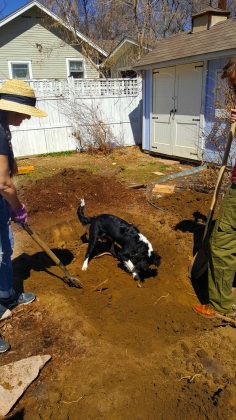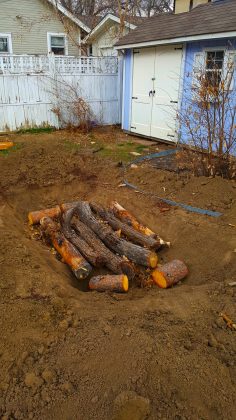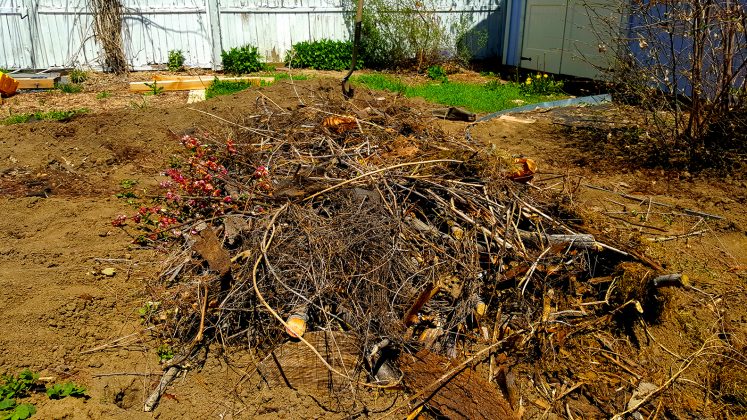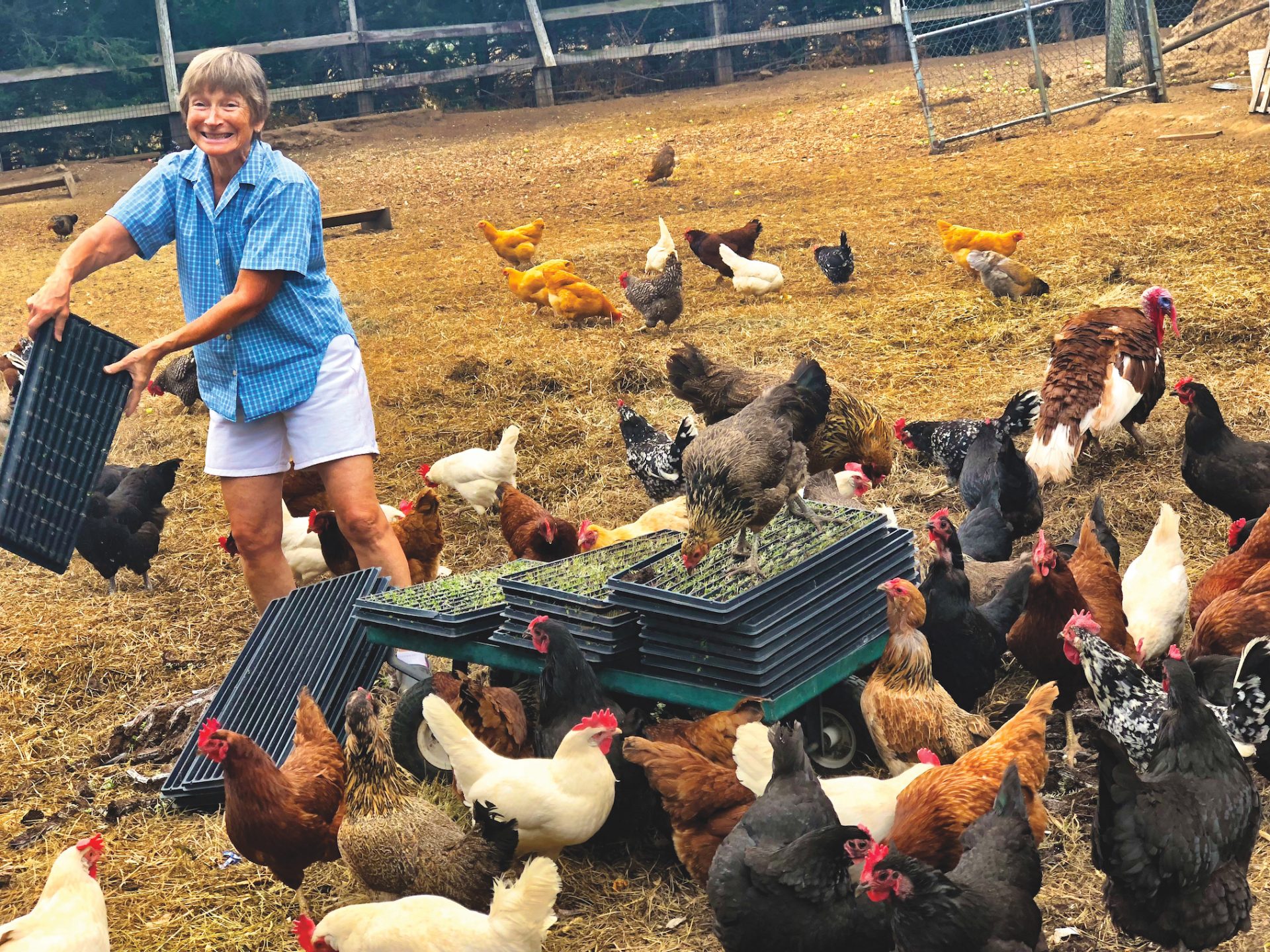Hügelkultur: Mounds of Potential
14 Apr 2022
How to create a low-maintenance, no-till raised garden bed that improves every year
By Sara Bruskin
Not only is “Hügelkultur” (pronounced “hoo-gul-culture”) fantastically fun to say, it’s the name of a permaculture technique that’s gaining popularity among eco-conscious gardeners. Translating to “mound culture,” this German term describes an agriculture method that steeply decreases the need for supplemental watering, extends the growing season and sequesters a lot of carbon.
How It Works
Creating a hügel bed starts with digging a shallow trench and placing large pieces of untreated wood at the bottom, like thick tree branches or entire trunk segments. You then layer on medium-sized branches, smaller branches, twigs, grass clippings, straw, leaves or any other biomass free of pesticides and herbicides. Next, top the resulting mound with a thick layer of compost and soil to create a rich growing surface. This top layer will feed and anchor your plants in the beginning while the serious magic brews belowground.
All that wood acts as a giant sponge, so hügel beds retain moisture extremely well. Because they require less watering, this makes the beds more sustainable and lower maintenance. As the wood and other compostable materials break down, the decomposition process generates heat, so the raised bed will warm up earlier in spring and allow for continued growing later in the fall. And of course, compost enriches soil, so the biomass adds nutrients to the bed as it decomposes.
Which Wood to Use?
Many growers prefer to use softwood in their beds because it breaks down faster and adds more nutrients to the bed at an earlier stage. Conversely, hardwood will last longer and give your bed more sustained nutrient enrichment, albeit more slowly.
Using some hardwood at the bottom of your hügel bed with softer wood on top is considered ideal, but it’s fine to use whatever you have on hand. (Refer to “Killer Wood” below for possible exceptions). If it’s available, use deadwood that has already started to decompose a bit, as it will require less nitrogen to break down.
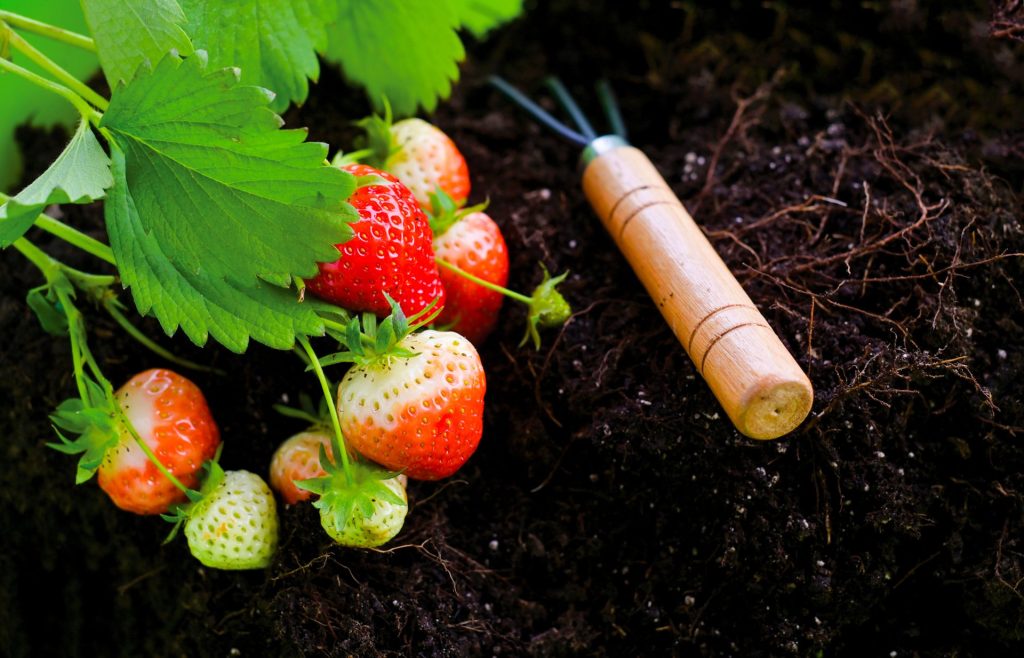
Patience and Planting
Many people familiar with hügelkultur say it’s best to leave a fresh bed fallow for a year, especially if you used wood from a living tree. When wood initially starts to decompose, it needs a lot of nitrogen, so the first year of a hügel bed’s life may present a difficult time for plants. Some gardeners have reported great success growing potatoes during their hügel bed’s first season because potatoes are not heavy nitrogen feeders. After that first crop, however, it’s better to plant perennials, as hügel beds function best without any tilling.
You can also offset the wood’s nitrogen use by adding fertilizer or building your bed with lots of nitrogen-heavy biomass, like coffee grounds, composted manure or fish emulsion. These amendments can help balance the nutrient needs of your bed and crops. Planting a cover crop like clover, beans, barley or rye will also help set the soil up for success.
Once you start using your bed, it’s important to arrange the plants thoughtfully. Those that require lots of water should be planted closer to the bottom of the mound, while plants needing less water and more drainage should go near the top. The hill-like shape of a hügel bed creates some built-in shade, so plants that get scorched easily will be happy on the north side, and sun-hungry plants will get full exposure on the south side.
As seasons pass, your hügel bed should need less and less water while yielding better and better crops. Of course, the biomass in your bed won’t break down forever, but growers have reported decades of soil benefits from a single hügelkultur project.
Between the rich soil and the environmental boons of growing in a hügel bed, all that digging is definitely worth it.

Killer Wood
After a ridiculously windy day in Boulder County, I became the proud owner of several black walnut branches that had been forcefully liberated from their tree. I was digging my own hügel bed and in search of biomass, but black walnut is considered a notorious garden villain due to its allelopathic properties (meaning it can kill or harm other plants near it because of a biochemical it leaches into the soil).
Black walnut trees purportedly contain a toxic chemical called juglone, which can disrupt respiratory pathways in other plants. Because of this, it has developed a reputation for damaging the flora growing around it. This has been regarded as gardening gospel for centuries, but a 2019 report by Washington State University Extension called it into question.
According to the report, “Juglone is not found in intact tissues of black walnut trees. Instead, living tissues contain a nontoxic precursor called hydrojuglone, which is transformed in the soil to make juglone. Most hydrojuglone is contained in the roots and shells of walnuts. There is little in the leaves and virtually none in the wood.”
In light of this information, I decided to risk placing black walnut wood on the very bottom of my hügel bed, where it wouldn’t be too close to the plants growing on top. One season in and my plants have been fine so far.
Other trees are considered allelopathic for different reasons, so be sure to research the wood available to you before using it. If you’re not sure what kind of tree it came from, use a plant--identifier app that can determine the species based on photos of the bark.
-S.B.

